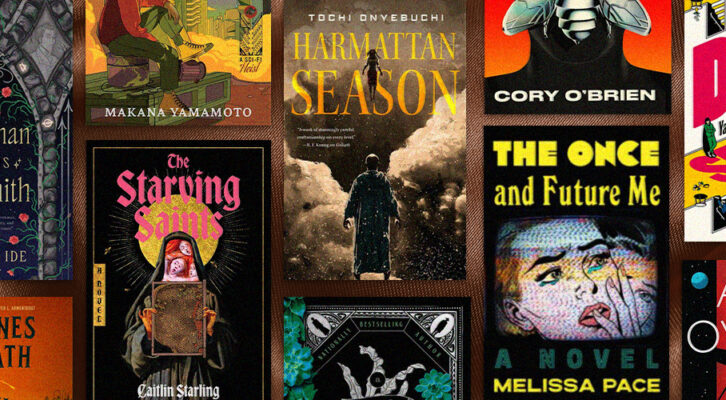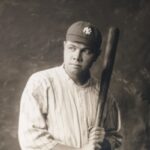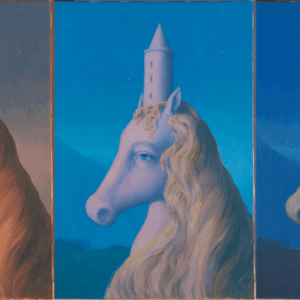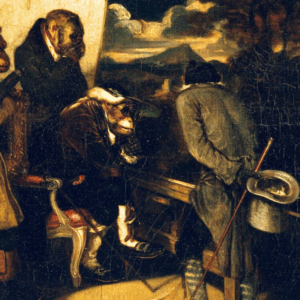
The Link Between Trauma, Drug Use, and Our Search to Feel Better
“As capitalism has invented ever more ways to be miserable, so too has it invented ever more specific ways to ease that misery.”
As long as humans have experienced emotional crisis (which is to say: for all of human history), they’ve attempted to ease their pain with drugs—plant-based psychoactives like marijuana in preindustrial societies, alcohol during the Industrial Revolution (quickly industrializing late nineteenth-century London, population 1 million, consumed an estimated 200 million quarts of beer, 50 million quarts of wine, and 10 million quarts of rum each year, for example). What’s new about our modern era isn’t drug consumption, it’s that drugs have become much more specifically formulated to ease each form of pain we experience in modern life. As capitalism has invented ever more ways to be miserable, so too has it invented ever more specific ways to ease that misery.
In an essay examining the origins of trauma and PTSD, the writer Will Self argues that mental trauma and the anxiety and despair it causes are inherent to the invention of modern, industrialized society. Self writes that technologies like the railway and the factory, and the very organization of life by a clock, were so destabilizing to our preindustrial rhythms that they caused a body-and mind-altering anxiety. In this understanding of modern capitalism, the PTSD caused by war, or, say, a neo-Nazi plowing an American muscle car into a crowd of protesters, is not unique; it is just the furthest node on a spectrum of the trauma that essentially everyone experiences under modern capitalism.
Which perhaps explains why it was at the height of industrial America that an industry dedicated to calming people down blossomed.
The 1950s saw the introduction of the first popular, industrially made anti-anxiety drugs. First with an antipsychotic called Thorazine, and then, most popularly at the time, with meprobamate, aka Miltown, a sedative with mysterious chemical properties (to this day no one really understands how it works) that immediately flooded American culture and bloodstreams. Newspapers called it a “wonder pill” and “emotional aspirin.” Pharmacies made signs that said “Miltown Available Tomorrow” to temporarily ward off the growing hordes of people coming in to get it.
By the late 1970s, Americans were consuming 2.3 billion Valium tablets a year. Billion. With a B.
“Fashionable ladies and hard-driving male executives alike kept their supplies close at hand,” historian of science Anne Harrington wrote in her book Mind Fixers. “Greeting card companies created cute Valentine’s Day designs that incorporated the drug, and bars introduced the Miltini—a martini with a Miltown tablet in place of the traditional olive.”
By the late fifties, one in three prescriptions in America was for meprobamate. Fifty tons were being produced a month, and a billion tablets had been sold within a few years.
And then, as fast as they took over America, the pills disappeared, not because people realized that consuming vast quantities of drugs was bad, or because the government regulated their use, but because a new class of drugs, promising even fewer side effects and less potential for addiction, took over. And those pills, developed fifty years ago as a replacement for Miltown, are what sit in my bathroom cabinet, and in a small pill case in my bag wherever I go in case I have a panic attack.
Klonopin is a benzodiazepine—a class of central nervous system depressants first synthesized by a man named Leo Sternbach at the drug company F. Hoffmann–La Roche in 1955. Sternbach was notoriously messy; his bosses did not like him. He was hardheaded, convinced he could find a new tranquilizer despite the company’s insistence he move on.
His research wasn’t going anywhere. Eventually, his bosses ordered him to clean up his disorganized lab, start from scratch, get it together. As he decluttered, his colleague Earl Reeder noticed a “nicely crystalline” compound, labeled RO-5-0690, sitting around that had gone untested for twenty years, so, on a lark, they decided to give it to some lab mice, just to see what it would do. Immediately they noticed that it relaxed the little animals; their muscles loosened, their movements slowed. By 1960, RO-5-0690 was on the market, branded as Librium.
And three years later, the company released diazepam, branded as Valium, named after the Latin word “valere,” which means “be strong.” The drug became so popular in such a short time that a few years later the Rolling Stones released a song about it called “Mother’s Little Helper.” By the late 1970s, Americans were consuming 2.3 billion Valium tablets a year. Billion. With a B. Somewhere between 10 and 15 percent of all Americans were on the drugs, as were somewhere between 4 and 8 percent of Europeans. By 1984, an estimated 500 million people worldwide had taken a benzo.
After Roche released its little miracle pill, drug companies, searching for their own patentable versions, began pushing out as many benzos as they could. In 1975, clonazepam, aka Klonopin, came to market.
As is more common than you’d probably like to think with psychoactive medication, no one, including the scientists who made them, really understood how benzos worked, even as doctors prescribed millions upon millions of the pills to patients. But in the late 1970s, researchers began to learn that the drugs helped flood the brain with gamma-aminobutyric acid, or GABA, which in essence blocks your nervous system from receiving too many activation signals.
There are dozens of different benzos, but they all work in basically the same way—forcing your nervous system into a kind of low-power mode. The main way they differ is in how long they last. One of the most popular, and notorious, alprazolam—more commonly known as Xanax—has a half-life of only twelve hours. You get high fast, you withdraw fast. That leads to more addiction. Klonopin, on the other hand, has a half-life of between twenty and eighty hours. The withdrawal is much slower. You’re not zapped back into your normal brain so quickly. And that’s why doctors prescribed it to me. The disadvantage is that it takes longer to work.
Which is why I would pace back and forth in my Philadelphia apartment, heart beating a thousand beats per minute, for ten, twenty, thirty, forty minutes, until I felt a heaviness overtake me. My eyelids would droop. My thoughts, instead of feeling like they were being released via machine gun, felt like they were launched from an old-timey pistol shot underwater, the propulsion forcibly slowed. I would drift off to sleep, wishing I could build a world out of Klonopin, like a gingerbread house—the walls and floors and tables and chairs a dusty blue; a Klonopin lamp, a Klonopin rug, a Klonopin dog. Peace on earth.
And then I’d wake up the next morning and, of course, the terror would be back.
*
Seeing my trauma and my drug use in this historical context—Charlottesville not as a one-off event but just a particularly nasty instance of an entire system set up to traumatize, and thus a system that encourages people to find relief in chemical cures—made me feel less alone.
But as repression killed these movements, and capitalism moved on, a new era emerged: the age of anxiety, which we’ve been stuck in since the 1970s.
In their 2014 manifesto, the European leftist collective Plan C wrote that each age of capitalism comes with an attendant affect. The Industrial Revolution brought widespread misery in the form of brutal factory working conditions. The early and mid-1900s brought crushing boredom, as lives became increasingly suburbanized, individualized, standardized—think of the prototypical depressed and stressed housewife and the businessman husband who cheated on her to add excitement to his life; stamp-size, pesticided grass yards, all cut to the same length, on which children would attempt to add any kind of spontaneity to their lives. The children of this era would go on to lead the next affective era in the form of the 1960s—which in many ways were a fight against this boredom, a call to reclaim the excitement of communalism, of revolution, of queerness and chaos.
But as repression killed these movements, and capitalism moved on, a new era emerged: the age of anxiety, which we’ve been stuck in since the 1970s. An age where as a society we have enough, even too much—food, housing, work, entertainment—but these things are precarious, always at risk of being stripped away. Homes sit empty as the homeless population grows. Wages flatline as productivity skyrockets. We never know what the next year will bring, when our rent will go up, when the next war will start, when inflation will take food off our tables.
After my mental breakdown, I began to see this internalized precarity everywhere I looked. I saw it in friends who lost jobs and then turned to drugs to ease the anxiety of their financial uncertainty; I saw it in the news, in statistics about suicide and addiction, and I saw it in myself—this feeling that the world and its violences had been placed into me, into my nervous system and psyche, an unwanted osmosis of energy.
For me, that osmosis was direct and obvious—the violence of fascism all represented by one man, James Alex Fields Jr., driving his car into a crowd and infecting me and so many others with his energetic sickness. For so many others the osmosis is slower and less conspicuous—the constant stress on one’s nerves from underpay and overwork and the rent being too high and our world, generally, being wholly unfair. But it is nonetheless damaging. We carry that stress in our nerve endings. We become bodies with constant excitation without release.
Klonopin does not permanently extinguish this excitation, but it tames it enough so that you can temporarily ignore it.
But the reason people use drugs is simple: it’s because they help. And the world, it’s bad. So we need help.
It’s not an exaggeration to say that drugs, both illicit and prescription, saved my life. They helped me when nothing else would. It’s hard to see through the haze of propaganda, the false divide that’s been placed between medications and illegal substances. But, to me, that divide is much less clear. People use illicit drugs for the same reason they use prescription ones—to quell pain, to help them focus or get through the day, to ease their depression and anxiety. What differentiates these drugs is less a matter of their purpose, and more a matter of how our laws and media treat these drugs. They’ve associated them with the ravages of poverty, they’ve criminalized them so that users of these drugs end up in a constant cycle of violence. We’ve been led to believe that drugs cause the breakdown, when in truth they are part and parcel of it. If our minds are constantly burdened, constantly being reshaped by the trauma of capitalism, of course we’re going to need ameliorants. Of course we’re going to need a break.
Drugs can be used in ways that end up breaking us, that end up keeping us closer to the trauma than we should be. The systems we have set up in this world often do not allow people to use drugs in healthy ways, and to stop using them when they want to. But the reason people use drugs is simple: it’s because they help. And the world, it’s bad. So we need help.
When I was at my worst, when drugs were the only thing that would help, I took a kind of sick solace in that: that so many others were in the same place.
*
There was one good night in my life that first year of breakdown. Like, one memory I actually look back on fondly.
It was perhaps a month in. And my friend Bobbi came over to my apartment. We watched a movie, but I do not remember which one. We ate dinner, but I do not remember what we ate. I just remember her, this butch lesbian with short hair and an aura of calm about her, sitting next to me, holding my hand as I stared at the TV in a daze, under the influence of a broken nervous system and 1 milligram of Klonopin. At some point I got sleepy from the downer in my bloodstream. I asked to go to bed.
Bobbi came with me. I lay on my side, curled up like a baby on top of the covers, and Bobbi pushed up behind me, her strong arms holding me tight to her stomach and big breasts. She smelled like lavender and sweat.
My eyes closed and then opened and then closed and then, when they opened again, it was two hours later and she was still there holding me.
That was the only moment of true comfort in my life for a year, maybe more; the only moment where my brain truly felt like it could turn off.
I would chase that feeling. Of ensconcement from everything evil in this world. And chasing it is what would keep me alive during my darkest moments. In some ways, it’s still what’s keeping me alive—the knowledge that with people to hold you close (and perhaps a chemical flowing through you that allows your brain to feel the comfort of that), the other side is visible, reachable, already here.
__________________________________
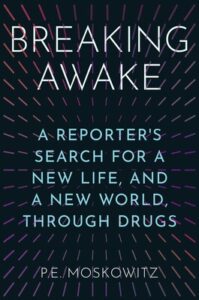
Breaking Awake: A Reporter’s Search for a New Life, and a New World, Through Drugs by P.E. Moskowitz is available from Atria Books, an imprint of Simon and Schuster.
P.E. Moskowitz
P.E. Moskowitz is the author of three books, including Breaking Awake: A Reporter's Search for a New Life, and a New World, Through Drugs. They are a frequent contributor to publications including New York magazine, GQ, and The Nation. They run the newsletter Mental Hellth, which explores how capitalism affects our psyches. They were born and raised and live in New York City.











